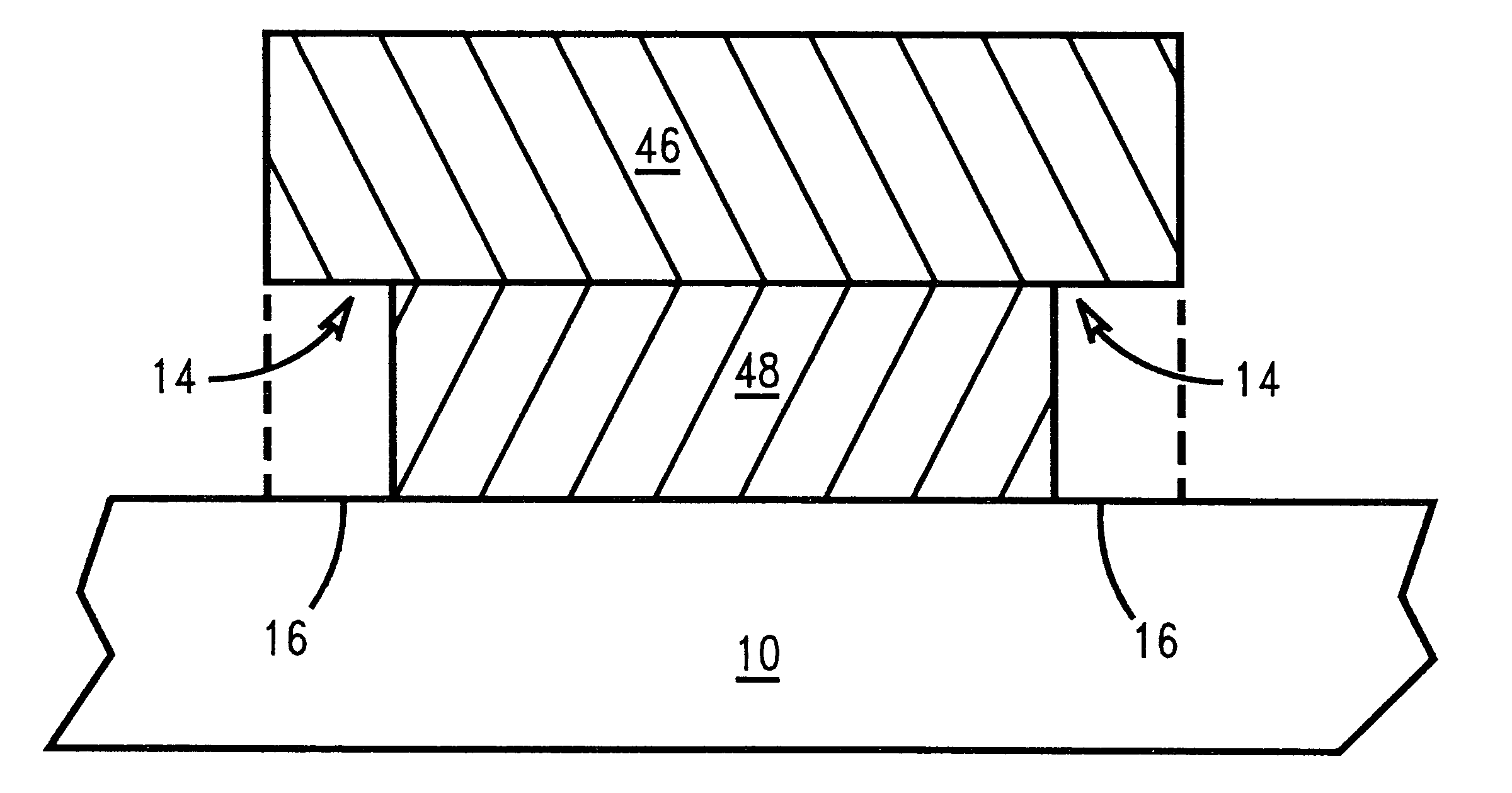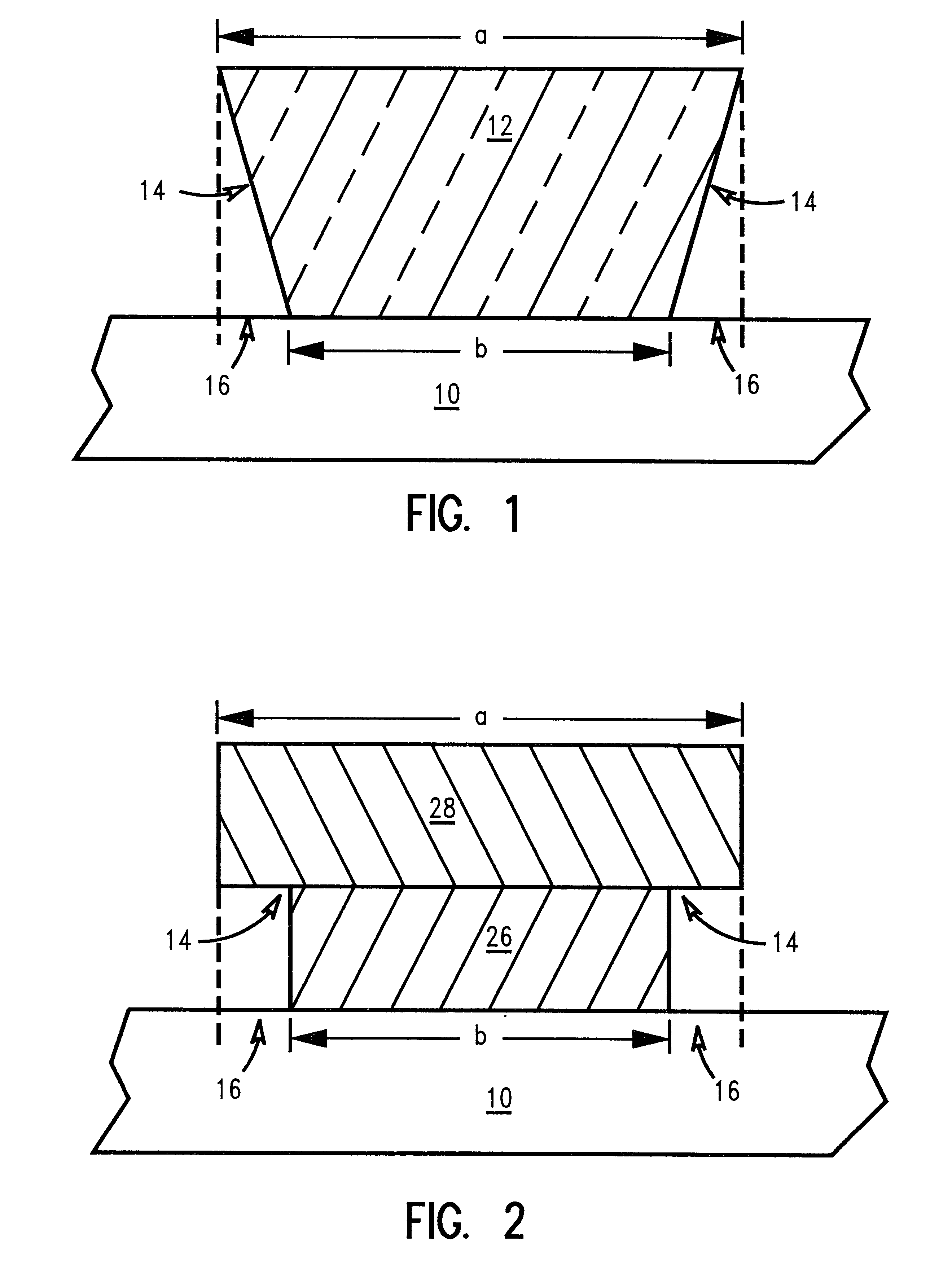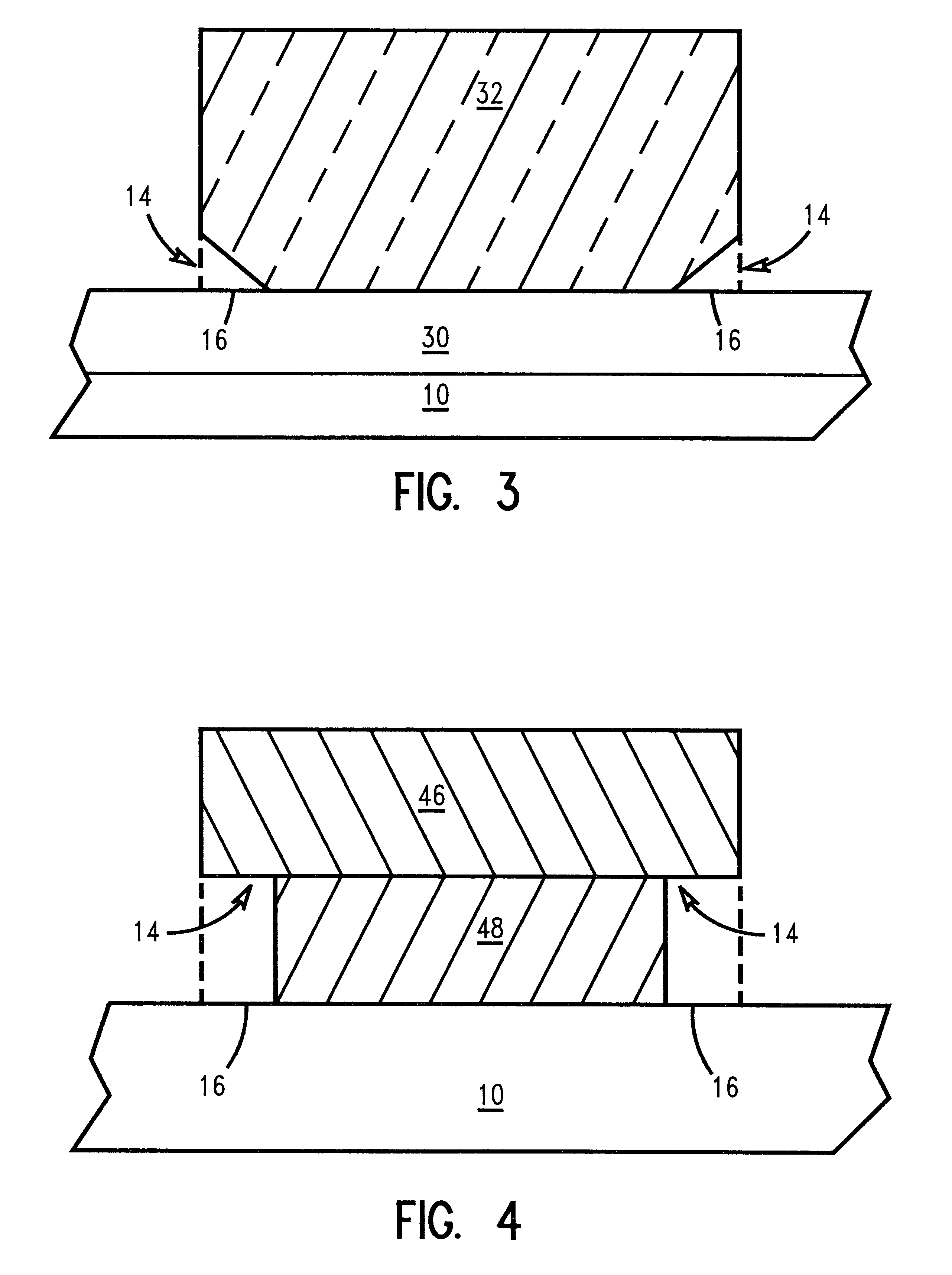Method to reduce plasma etch fluting
a technology of plasma etching and fluting, which is applied in the direction of semiconductor devices, instruments, photomechanical treatment, etc., can solve the problems of metallized ceramic to metallized ceramic shorts, particularly problematic fluting dimensions of 20 to 50 nm, etc., and achieve the effect of limiting the selectivity of oxide etching and reducing the fluting
- Summary
- Abstract
- Description
- Claims
- Application Information
AI Technical Summary
Benefits of technology
Problems solved by technology
Method used
Image
Examples
Embodiment Construction
)
In describing the preferred embodiment of the present invention, reference will be made herein to FIGS. 1-4 of the drawings in which like numerals refer to like features of the invention. Features of the invention are not necessarily shown to scale in the drawings.
The present invention is directed to a method and process to reduce plasma etch fluting during the etching of a pattern on a substrate, such as a semiconductor substrate. The invention reduces fluting by forming a resist structure profile that is narrower at its base than the upper portion of the resist structure. The base of the resist structure is in contact with the surface of the substrate. The portion of the substrate that is adjacent to the base of the resist structure is "shadowed" or "shielded" from the primary etch direction by the wider upper portion of the resist structure. The wider portion of the resist structure is also referred to as an "overhang", or alternatively, an "undercut". The wider, upper portion o...
PUM
| Property | Measurement | Unit |
|---|---|---|
| thickness | aaaaa | aaaaa |
| thickness | aaaaa | aaaaa |
| thickness | aaaaa | aaaaa |
Abstract
Description
Claims
Application Information
 Login to View More
Login to View More - R&D
- Intellectual Property
- Life Sciences
- Materials
- Tech Scout
- Unparalleled Data Quality
- Higher Quality Content
- 60% Fewer Hallucinations
Browse by: Latest US Patents, China's latest patents, Technical Efficacy Thesaurus, Application Domain, Technology Topic, Popular Technical Reports.
© 2025 PatSnap. All rights reserved.Legal|Privacy policy|Modern Slavery Act Transparency Statement|Sitemap|About US| Contact US: help@patsnap.com



